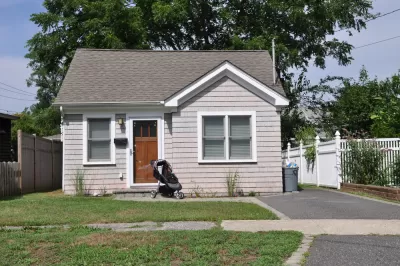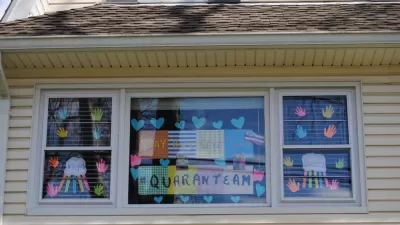The effects of the coronavirus pandemic on the U.S. real estate market are only beginning to show, but renters, homeowners, landlords, lenders, and more need to prepare for the worst.

Dwight Merriam writes to get an initial read of the effects of the coronavirus pandemic on the real estate market, summarizing the initial status of the market as a widespread crisis, with few apparent responses available and numerous effects.
Expected housing pressures for renters and owners have caused banks to decrease lending. Merriam expects home values to fall as buyers leave the market, and the entire process of buying a home becomes problematic (open houses are inadvisable, for instance).
The effect has already been felt. The National Association of Realtors surveyed its members on March 9 and its Realtors reported an 11% drop in buyer traffic and 7% lower seller traffic. The NAR predicts a 10% reduction in sales, at least in the short-term, as a consequence of the coronavirus. The NAR also issued a guide for its members about what questions they can ask of those they are dealing with as to their exposure to the virus and warning them to avoid discrimination.
The market has already reacted strongly, with REITs in mall properties and hospitality hammered. Ryman Hospitality Properties was $90.30 a share on February 18th. On Monday, March 17th, it closed at $24.09.
The remainder of the article reads like an info dump and a brainstorm, because there are many, many questions about fraud, liability, insurance, and business interruptions that simply don't have answers yet.
[The article requires an email registration, but is otherwise free to read.]
FULL STORY: The Coronavirus Pandemic and the Crisis in Real Estate

Planetizen Federal Action Tracker
A weekly monitor of how Trump’s orders and actions are impacting planners and planning in America.

San Francisco's School District Spent $105M To Build Affordable Housing for Teachers — And That's Just the Beginning
SFUSD joins a growing list of school districts using their land holdings to address housing affordability challenges faced by their own employees.

The Tiny, Adorable $7,000 Car Turning Japan Onto EVs
The single seat Mibot charges from a regular plug as quickly as an iPad, and is about half the price of an average EV.

Trump Approves Futuristic Automated Texas-Mexico Cargo Corridor
The project could remove tens of thousands of commercial trucks from roadways.

Austin's First Single Stair Apartment Building is Officially Underway
Eliminating the requirement for two staircases in multi-story residential buildings lets developers use smaller lots and more flexible designs to create denser housing.

Atlanta Bus System Redesign Will Nearly Triple Access
MARTA's Next Gen Bus Network will retool over 100 bus routes, expand frequent service.
Urban Design for Planners 1: Software Tools
This six-course series explores essential urban design concepts using open source software and equips planners with the tools they need to participate fully in the urban design process.
Planning for Universal Design
Learn the tools for implementing Universal Design in planning regulations.
Smith Gee Studio
City of Charlotte
City of Camden Redevelopment Agency
City of Astoria
Transportation Research & Education Center (TREC) at Portland State University
City of Camden Redevelopment Agency
Municipality of Princeton (NJ)




























